Local On Lockdown: Local SEO For Multiple Locations
Daniel Trick
Feb 07, 2025
9 min read
Everyone and their dogs know how to optimize local SEO for one location.
But what if your business has multiple locations?
That’s a bit different, isn’t it?
Thousands of local SEO guides are published on prominent platforms, but hardly any for those researching multi-local SEO.
Multi-location SEO is tricky because you need to optimize for each location.
Applying a blanket formula usually doesn’t work.
How do you manage dozens of teams, products, and different areas?
As always, though, we’ve got you covered.
This guide runs through local SEO techniques for businesses with multiple locations, showing you exactly what you need to do to dominate.
We cover:
- Creating your location pages
- Building local links
- Making your content local-focused
- Managing link-building
- Gaining more positive reviews
- Appearing in “local map packs” (more on this later)
Build Your Location Pages
Start by building your location pages for each area you operate in.
These let you tailor your targeting to customers in specific locations while hitting SEO requirements.
The goal is to make these pages as relevant as possible to local audiences.
Here’s an example from Support Network, a platform that connects clients with residential carers. It produced this page to attract clients in Geelong, a city near Melbourne, Australia:
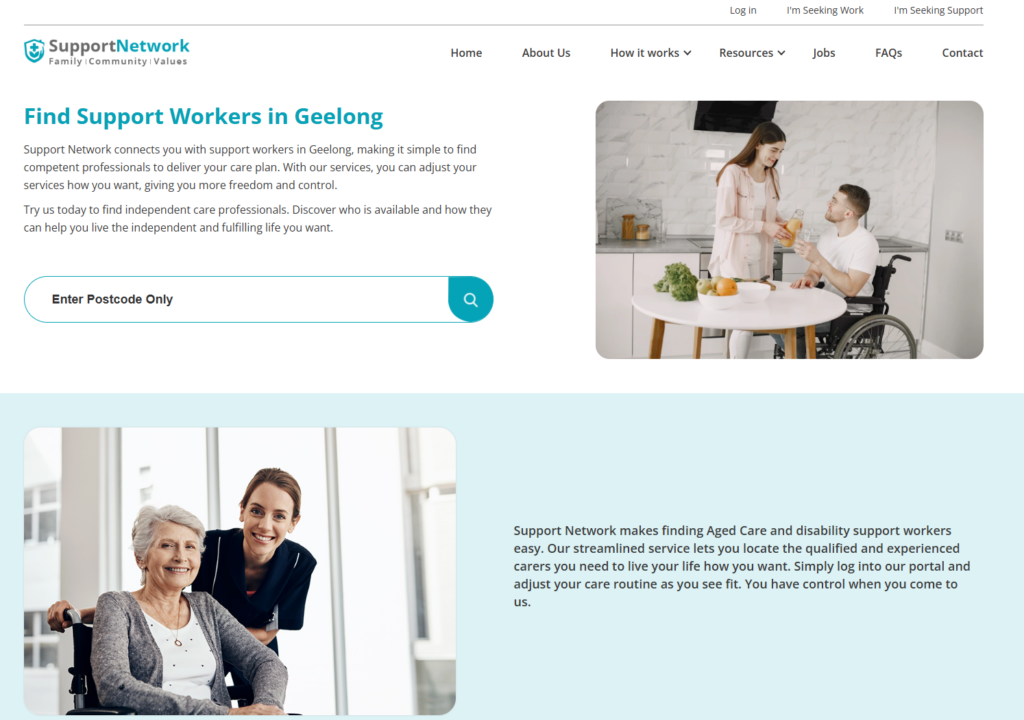
Interestingly, the brand doesn’t have physical locations in these areas. It just connects people with clients.
But it still went to the effort of creating this page (and many others). Why? Because it wants to tap into local markets.
Here’s another example from roofing company Miller’s based in Cumbria, UK, near the Lake District National Park.
It wanted location pages to tell its customers where it works, including Windermere. Here’s the page:
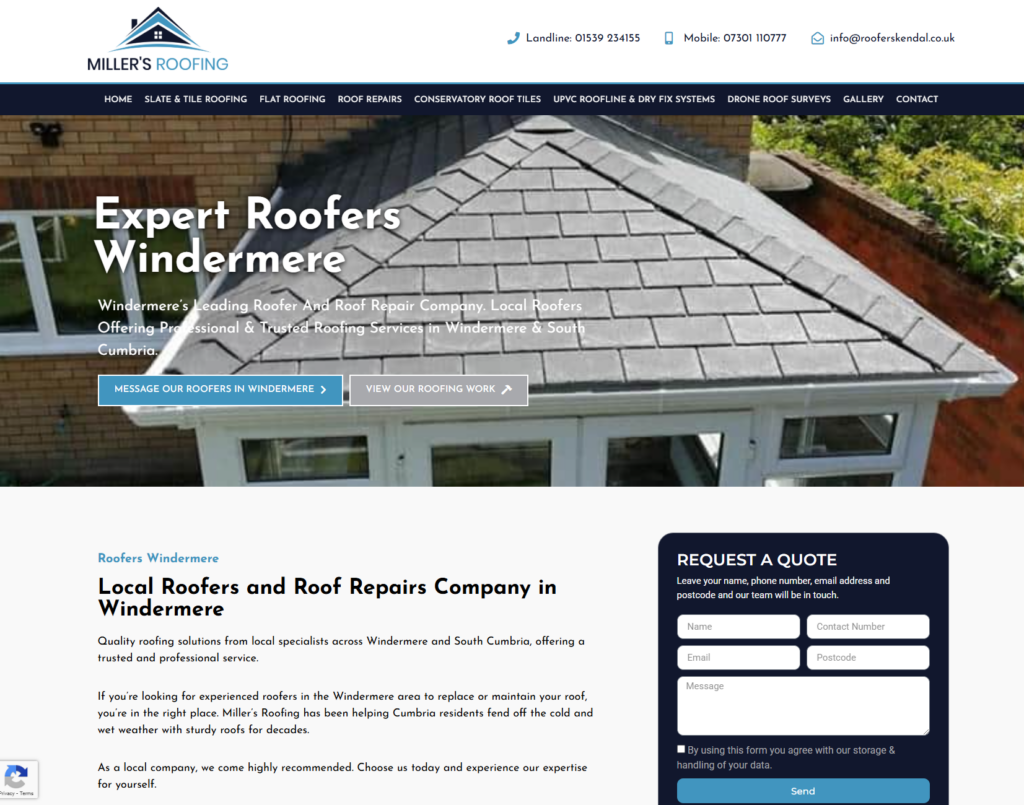
Notice how the brand incorporates the location seamlessly into the copy. “Expert Roofers Windermere” hits the keyword their audience is typing into Google while also looking professional.
Also, see how the location page is surrounded by calls to action (CTAs). Prospective customers can message the company’s roofers, view their work, or request a quote. It’s all there on the page.
Structuring Location Page URLs
Structuring URLs for location pages is easy.
Here’s what Support Network does:
- https://supportnetwork.com.au/support-workers-in-geelong/
- https://supportnetwork.com.au/support-workers-bunbury/
- https://supportnetwork.com.au/support-workers-in-cairns/
Likewise, Miller’s Roofers takes a similar tack:
As a general rule, we suggest you include real words in location page URLs, including the location name (i.e. “Windermere”).
This policy tells Google that the page is location-based, making it more likely to appear in search results for relevant keywords.
Dealing With Near Me Searches
“Near me” searches differ because they don’t contain the location name.
However, you don’t need to worry too much about this. Google’s algorithm is smart so it can usually tell where people are searching from. (Most people have location settings turned on).
If you’re worried, you can include “near me” keywords in your location page copy. Support Network does this expertly in its location page copy.
Here’s an example from the platform’s Cairns location page, intelligently integrated by the writer:

Find a way to slot it in naturally. Here, they’ve got around the first-person issue by including it in an FAQ question.
Just jamming in queries for the sake of SEO would make it unreadable for visitors and make it look spammy to Google.
Build Location-Related Content
Next, build location-related content. The more you can do this, the more relevant your pages will be to audiences (and Google).
How you do this depends on your business. Here are some ideas:
- Talking about how you offer “the best service” in a specific area or city
- Describing the local area and linking it to your brand
- Adding your service keywords and the location identifier afterwards (e.g. “care services in Cairns”)
The following page from Absolute Climate Solutions is an excellent example, exemplifying methods 1 and 3.
It covers how the company offers the best service in a specific area while adding relevant keywords, like “HVAC services in Witney.”
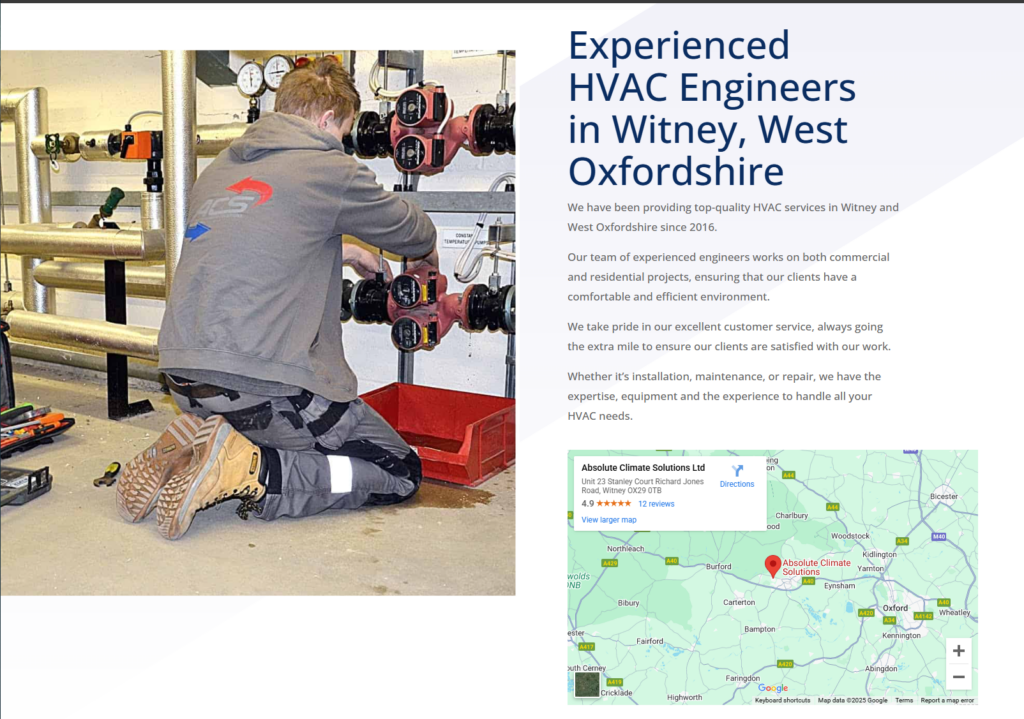
While reading the text, notice the location page also has a map. This addition shows customers just how close the service is, which is great for driving conversions. 😍
However, always be careful when writing copy for different locations. Google bases relevance on intent and copy. So don’t use the same text but switch out the keywords (say, from “HVAC Witney” to “HVAC Kennington”). That won’t work!
Instead, make each page unique, targeting a different audience. Think about what people in specific areas want to read. Perhaps the needs of HVAC owners in Witney differ from Kennington’s (maybe because they can’t find reliable services in their area?)
How To Write Effective Local Content
Ultimately effective local marketing copy requires you to step into your customers’ shoes.
Therefore, decide what content they might want to read on each location page.
Here are some examples:
- Are you tired of waiting hours for HVAC professionals to help you in Witney? Our team is close by, so we can be with you in minutes, fixing any issues you have with your system or replacing it if necessary.
- Cheap gyms are rarer than duck’s teeth in New York. But with us, you won’t pay through the nose. We’re the most affordable in town, giving your body a workout, not your bank account.
- As a local estate agent in Boston, we know what drives the local market. If you’re confused about topics like regional development and unit construction for investment, we can help.
When picking content, link the pain point to the location. For example, say you are the only supplier in an area. Highlight it on your location page.
You can also look for existing successful page content for your target keyword.
Here’s an example of Googling “florists in New York:”
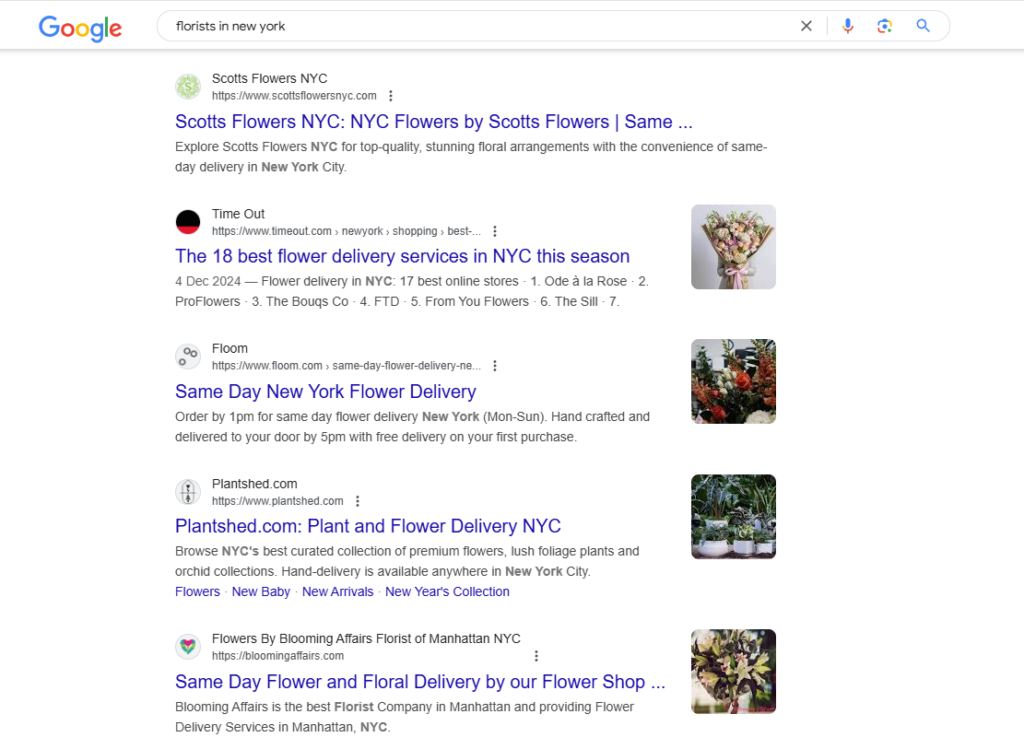
Pages that already rank well can help you decide what to include on your location-specific pages.
Remember, you don’t always want to make them consistent with the rest of your site. Adding unique content by location will help them rank better.
What About Social Media For Location Content?
Social media is another tool you can use for multi-location local content.
It also helps you connect with local people who use these platforms.
It’s not quite the same as “local SEO” because it isn’t optimizing for search. However, it can be helpful and feed into your efforts elsewhere.
Here’s an example from the piri-piri chicken restaurant, Nandos’s Instagram in Carlisle:
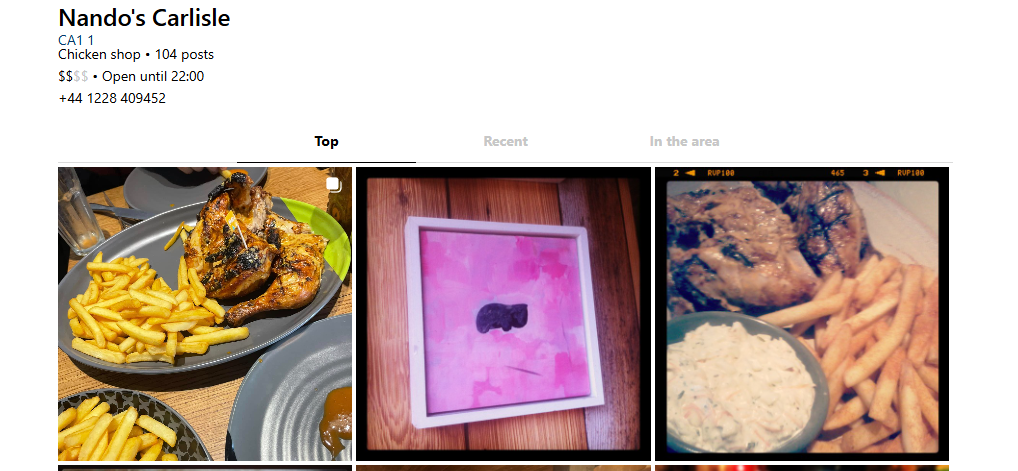
And here’s an example from a location over the Pennines in Newcastle:
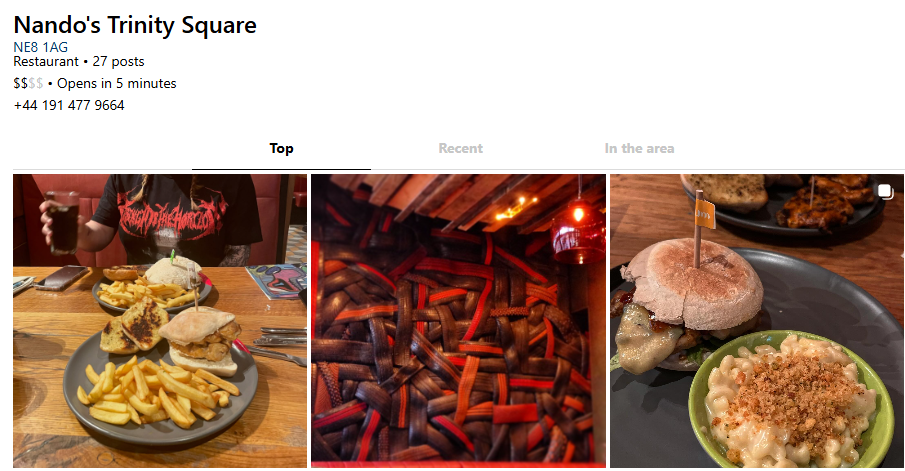
Same but different, right?
Target Location-Specific Keywords
Next, focus on targeting location-specific keywords (which we have partly covered already). Always localize your efforts to each location.
We will be honest with you: finding local keywords for every location can be tricky. Low search volume often plagues the discovery process. (It’s like finding a needle in a haystack sometimes).
Unfortunately, some research tools won’t tell you when people search for a specific term if volumes are too low.
Nightmare!
The solution (in general) is quite simple, though: fit the keywords in the copy around the one in the title.
For example, if the title is “HVAC services in London,” then you could add:
- Air conditioning companies London
- London boiler repair
- London HVAC
- London HVAC companies
- London furnace repair
If you don’t want to brainstorm or guess, use a keyword planner (which is what we did to come up with these ideas!)
For example, if you type “HVAC services in London” into Google’s Keyword Planner, you get the following:
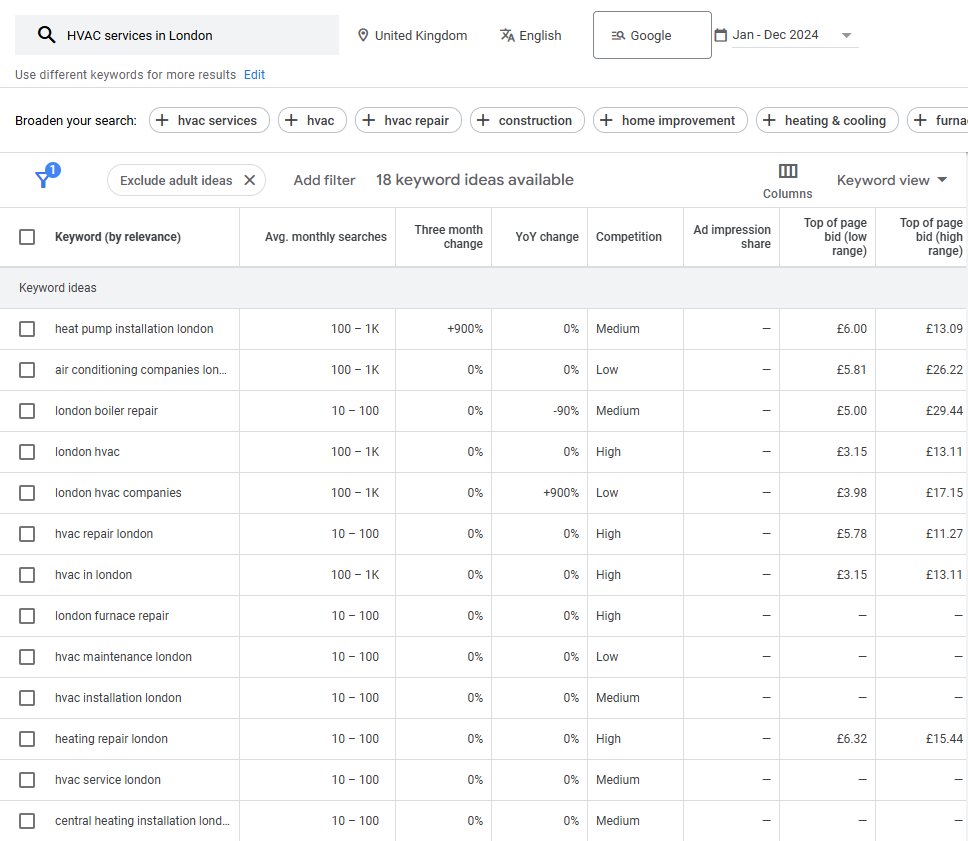
Then, you can browse the list, view the search volume and competition, and see which you should target.
Looking at Google Keyword Planner’s output, “air conditioning companies London” would be the perfect keyword to include on a London location page – low competition but high search volume. Juicy!
Optimize For Google Map Pack
Next, optimize for Google Map Pack for every location where you operate.
This applies when you have physical premises in each of these locations.
Google’s map pack matters because it’s the first thing users see when they type in a keyword related to your location and service. It’s right there at the top of the results page.
Unfortunately, you need a Google Business Profile to appear on the map pack. But don’t worry: signing up is easy.
Once you set it up, you can add additional locations.
Here’s what the map pack looks like for the search term “barber Atlanta.”
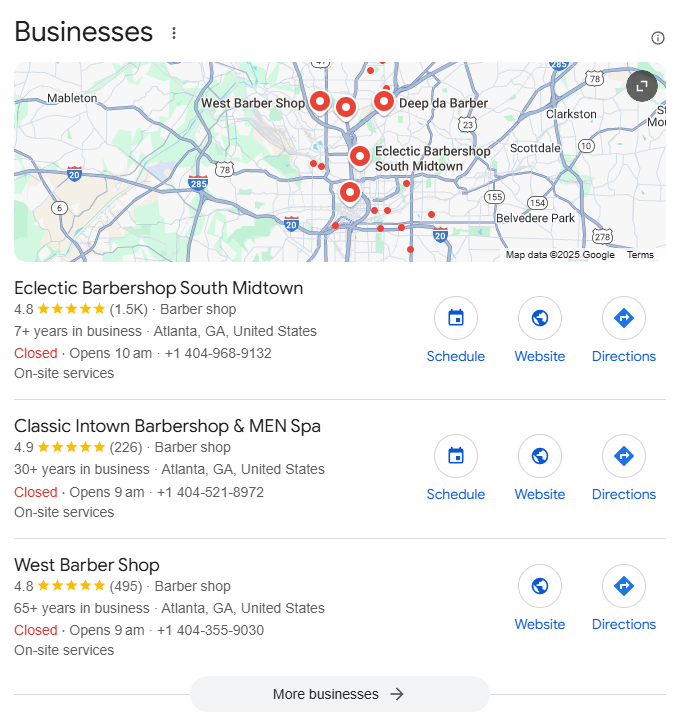
See how Google displays the top three barbers in the city and lets users explore further (by clicking “more businesses”).
These three businesses in the map pack rank well because of their high number of positive reviews. Ideally, you want to be in one of these positions for your local area.
Unfortunately, Google doesn’t let you set up Business Profiles in locations where you don’t operate. It’s not allowed. So, if you travel to different locations to provide services, you can only put your main address on Google Maps.
After you set up your Google Business Profile for multiple locations, track the “searches” metric. This data tells you how many people are seeing you in the map pack after typing in relevant keywords.
This figure will be low when you start. But it can rise quickly if you carefully choose your on-page keywords. Keep track of it to measure and adjust your performance.
What About Reviews?
Doing well on the map pack also requires gathering plenty of five-star reviews–the more, the merrier.
Google loves reviews because they represent social proof. If existing customers value your services, it stands to reason that future ones will, too.
Therefore, automate your review-gathering process for each location. Collect email addresses and send out emails to remind customers to leave feedback.
These days, you can also rely on Google for this. (It will sometimes ping users to write a review of a restaurant if their location data suggests they were there). But, of course, it’s not 100% reliable.
Usually, you’re on track for massive success once you get past 50 reviews (with a star rating above 4.5).
Anything above 100 is excellent.
Build Links For Multiple Locations
Local SEO for multiple locations also requires proper link-building.
When you start your business, any legitimate link will improve your ranking.
However, multi-location businesses benefit most when links come from local sites.
For example, if you run a pizza shop, receiving a link from a local community group is better than, say, a generic food blogger. The latter will help but not quite as much as the former.
Remember, backlinking isn’t solely about SEO. It’s also about allowing people to click through to your content. If links for your pizza joint feature on popular local websites, more people are likely to find you organically, not just through regular Google searches.
Local university websites are one of the best places to get local links. Google assigns these sites high domain authority, meaning any links from them give you lots of SEO juice.
Here’s an example of a car hire company with a link on the University of Surrey’s website:
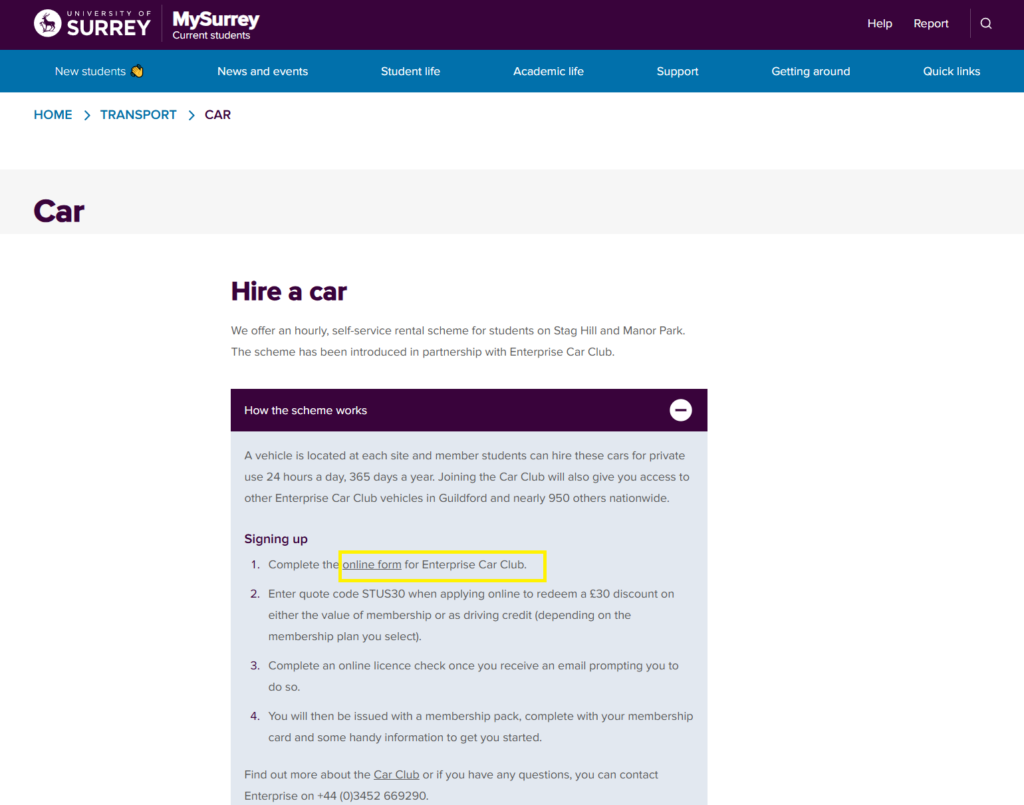
You can also get local exposure by going to local clubs, sports teams, and religious establishments. These don’t have authority quite as high as universities, but they can still help you get out of page 5 misery!
Run Through Your Final Local SEO Checklist
Okay, just a few more things to tick off for super-charged local SEO:
Directory Listing Consistency
Before finishing, check if your online directory listings are consistent. Your business name, address, and phone (NAP) should match across platforms (like Yelp, TripAdvisor, etc.).
If they don’t match, Google will see this as a negative signal and downrank you for that area.
(Don’t worry, Google is smart enough to know that some businesses have different addresses and phone numbers for various locations!)
Mobile Optimization
Multi-location local SEO also requires mobile optimization (as does every form of SEO).
Therefore, check every location page works on mobile.
Bear in mind that Google is now fully “mobile-first,” meaning they care more about your mobile site than your desktop. Because of this, most experts avoid focusing on desktop pages.
Add Structured Data
Finally, add structured data for local businesses to your Google Business Profile (and other locations).
Make sure you add anything applicable, including:
- Your opening hours
- Your menus (if you run a restaurant, spa, or mechanic workshop)
- Reviews (for social proof)
- Location (so people know where to find you)
- Service area (a highlighted region on Google Maps you serve)
- Pricing (rough guide)
- Events (allowing you to tell Google what’s on your calendar)
The more structured data you can add, the better. People love it when you are transparent.
Now You Know How To Do Local SEO For Multiple Locations
Reading this guide, you should know how to do local SEO in multiple locations.
Yes, it can be complicated, but you’ve learned a lot, including how to:
- Optimize for “near me” searches that naturally incorporate keyword phrases into your copy
- Encourage local reviews to dominate the Google “map pack”
- Target location-specific keywords using various research tools
- Structure location-based URLs properly
- Create dedicated location pages that give you an edge over the competition
- Use social media to win over local audiences and promote your firm
- Earn local backlinks from high-value sites, like universities and clubs
- Create locally relevant content
Don’t worry, fatjoe has you covered with help to build more links and local citations to your site.
Become a Pro at SEO
Join 65,000 others and learn the secrets to SEO success with our weekly blog posts.
